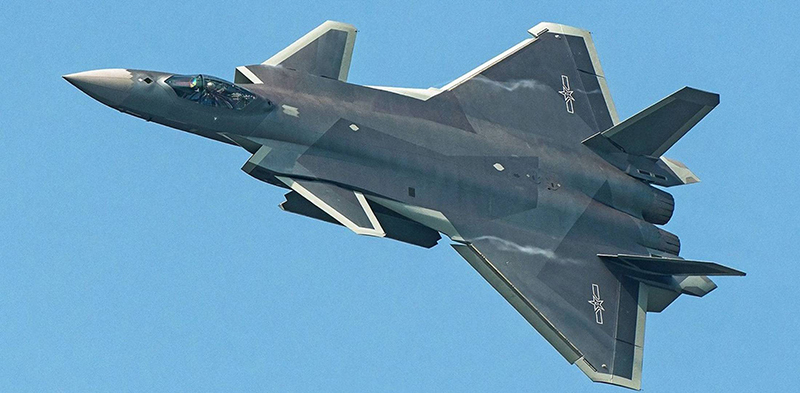
China Has Emerged as a Preeminent Global Strategic Super Power: What Does It Mean?
During the past five years China’s defense programs have not accelerated, they have increased by multiples into segments the Chinese had not previously been involved in. The introduction of a developmental aircraft carrier program, the fielding of an operational stealth fighter, the deployment of the world’s longest range ICBM and several new state-sponsored defense programs including tactical aircraft and helicopters intended specifically for export sale signal a parallel emergence of China’s global defense doctrine along with their dominant economic influence.
But what are China’s strategic and tactical air capabilities and, more importantly, what can we theorize about their intentions not only in Asia, but around the world?
China’s new defense and aerospace initiatives are a strategic necessity to provide foundational security for their rising economic influence globally.
Two years ago, in 2015 The International Monetary Fund (IMF) ranked China as the number one economic superpower in the world. That year China surpassed the United States based upon the purchasing power parity of GDP indicator (gross domestic product). The IMF reported that China produced 17% of the world gross domestic product in 2014 passing the U.S. GDP of 16%. China’s increased global influence has inspired low and middle income countries to emulate China’s approach. These Chinese allies now engage in partially state-sponsored rapid economic growth including the Latin American countries, Brazil, Argentina and Columbia as it emerges from a protracted drug war. India and Pakistan are now also aligned with China on several significant defense and economic initiatives.
While the subject of China’s emerging military is vast, there are several standout defense aerospace programs that provide an insight into China’s global motives.
China’s Operational Stealth Fighter: The J-20
China’s Chengdu J-20 stealth fighter has just officially entered active service with the People’s Liberation Army Air Force (PLAAF): “China’s latest J-20 stealth fighter has been officially commissioned into military service, Ministry of National Defense spokesperson Wu Qian told global media in a September 28, 2017 press release on the Xinhua.net and the official state defense media website.
Analysts suggest the J-20 is likely a medium-long range interceptor roughly analogous to the interceptor role of legacy aircraft like Russia’s older MiG-25 Foxbat, albeit much more sophisticated, and comparable to a Gen. 5 fighter.
There have also been comparisons to the U.S. F-22 Raptor, although the F-22 has emerged in combat in Syria as a precision strike low-observable aircraft in addition to its air superiority role. Western observers have suggested the primary low-observable capability of the J-20 is from the front of the aircraft, but perhaps not at other aspects, suggesting the J-20 is optimized for the interceptor role at least initially.
At different times, both in 2016 and 2017, there were unconfirmed reports that China may sell the J-20 to Pakistan in what would be the first-ever sale of a stealth air superiority specific Gen 5 aircraft in the export market (the multinational F-35 is described as a multirole Joint Strike Fighter, not exclusively as an air superiority interceptor like the J-20 or the U.S. F-22, which has not been exported outside the U.S.
Given this and more information about the J-20 it can be reasonably suggested that this aircraft is intended primarily for defense of Chinese air space and, if exported, some of its border allies. Sharing air defense with friendly border countries makes sense since China shares a border with a staggering 14 different countries. The U.S. only borders 2.
Read more at https://theaviationist.com/2017/10/25/chinese-stealth-goes-operational-carrier-program-and-export-initiatives-accelerate/#u24CMxrI7oU4G5A5.99
No comments:
Post a Comment